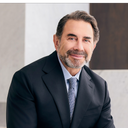What are the advantages of using ear cartilage to build a bridge during an Asian rhinoplasty procedure?
Answers (9)
From board-certified doctors and trusted medical professionals
Dr. Richard Galitz, MD, FACS (in memoriam)
Board Certified Facial Plastic Surgeon
Answer
Dr. Francis R. Palmer, III, MD (retired)
Board Certified Facial Plastic Surgeon
Answer
More Asian Rhinoplasty Questions
See all Asian Rhinoplasty Q&AWE SEND PRETTY
EMAILS
What’s trending? Who’s turning heads? Which TikTok myths need busting? We’ve got you. No fluff, no gatekeeping—just real talk. Get our free, unfiltered newsletter.


